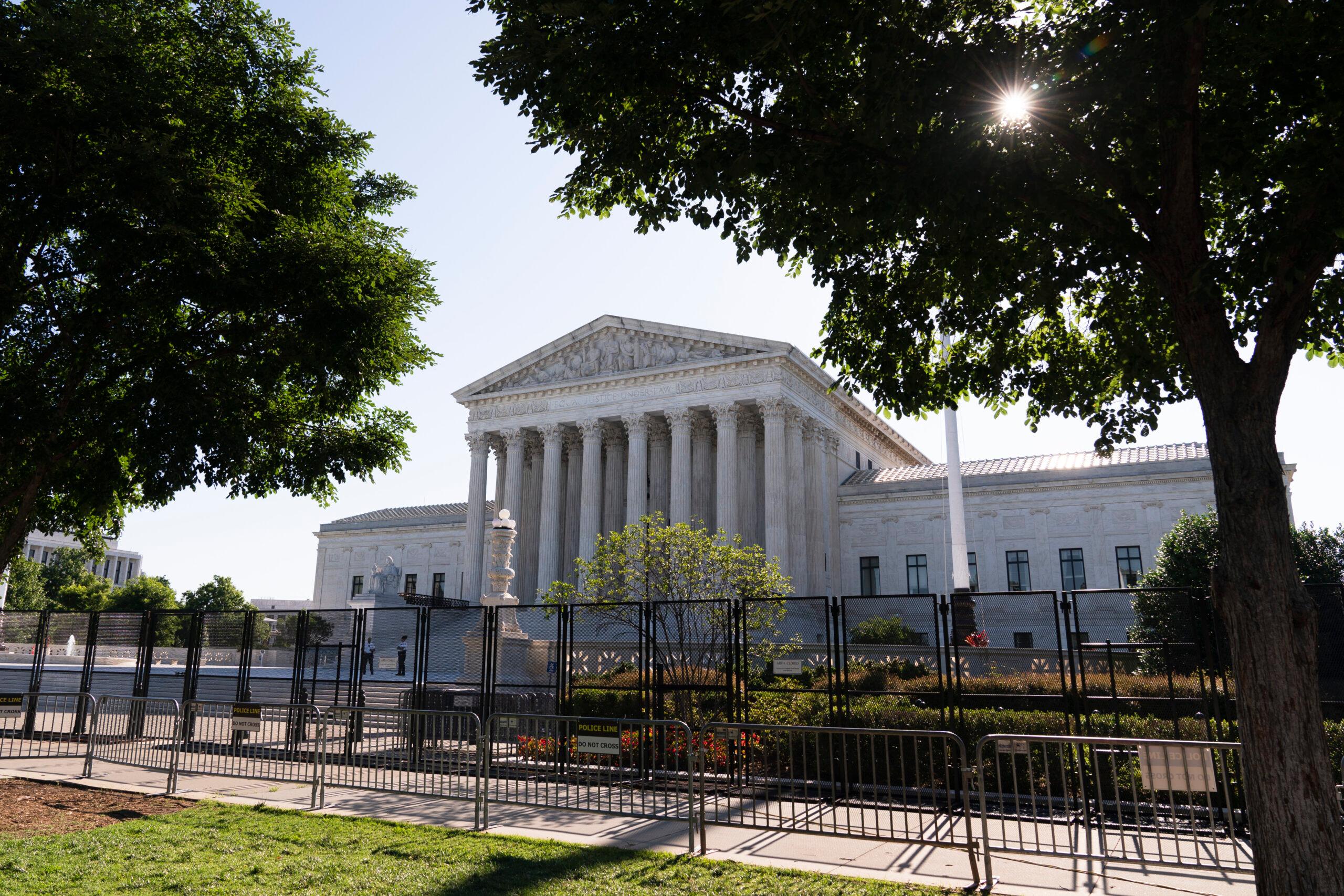
Updated at 3:56 p.m. on June 27, 2023.
The U.S. Supreme Court on Tuesday said that Colorado violated a man’s First Amendment rights by sending him to prison for harassment after he was convicted of sending hundreds of thousands of messages to a singer-songwriter.
The ruling, based on a 7-year-old Arapahoe County case, raises the standard on when all forms of speech are considered truly threatening. It will force prosecutors and law enforcement across the country to prove in cases like this that the person sending the messages actually intended harm in sending them or that the person disregarded a substantial risk that his communications would be viewed as threatening violence.
The 7-2 decision was authored by Justice Elena Kagan. Justices Clarence Thomas and Amy Coney Barrett dissented.
While legal scholars and tech moguls across the nation will likely focus on the ruling’s implications for social media, the decision is deeply personal in Colorado. That’s where a musician felt she had to relocate from the state after her life was upended, and a man did time in prison for stalking her online.
In April, Colorado Attorney General Phil Weiser argued in front of the justices that the state was correct in convicting and imprisoning Billy Raymond Counterman after he sent musical performer Coles Whalen hundreds of thousands of messages via Facebook over several years. Some of the messages were harmless, others said she should die.
At issue is the tension between unprotected and protected speech — the need for states to take threats, even written ones, seriously to protect the public and the need for states to allow people to freely express themselves through discourse.
In the Counterman case, justices focused a lot on what the speaker intended.
“The state had to show only that a reasonable person would understand his statements as threats. It did not have to show any awareness on his part that the statements could be understood that way,” the majority opinion noted. “For the reasons stated, that is a violation of the First Amendment.”
In the majority opinion, Kagan threaded a pretty small needle, saying that Counterman’s messages weren’t actually protected by the First Amendment, but that, in order to send him to prison, the state and law enforcement would have to prove he had some actual intention of wrongdoing.
“It’s very hard to draw these kinds of lines,” said Christopher Jackson, an appellate attorney at Holland & Hart LLP. “I don’t think anyone would dispute that the experience of the victim was awful. But it’s another question about whether you have the state come forward with charges and incarcerate someone for this.”
Weiser argued that in the context of volume, frequency, and the tone of some of the messages, along with how Whalen perceived those messages, the state was right in sending him to prison because threatening messages are usually the start of something much worse.
“Requiring specific intent in cases of threatening stalkers would immunize stalkers who are untethered from reality,” Weiser told the justices in almost two hours of oral arguments. “It would also allow devious stalkers to escape accountability by insisting that they meant nothing by their harmful statements. This matters because threats made by stalkers terrorize victims, and for good reason. Ninety percent of actual or attempted domestic violence murder cases begin with stalking.”
Weiser said in a statement Tuesday that he was disappointed because “the court has chosen to prioritize threats over those terrorized by the threats,” he said. “According to the Court, protecting the ‘speech’ of threatening stalkers matters more than guarding against the life-changing harms caused to those made to fear for their lives.”
Counterman’s attorney, Washington, D.C.-based John Elwood, said before Monday’s decision that he worried imprisoning people for messages they didn’t intend to be threatening could have a chilling effect on the country’s free speech protections.
He has said that Counterman, who is mentally ill, did not intend to seem threatening to Whalen, nor did he understand his notes to be scary.
“The chilling effect comes from being told it doesn’t matter what you think, you just have to think about the reaction of your audience,” Elwood said.
Colorado's lead public defender Megan Ring, whose office represented Counterman in his original criminal case, welcomed the ruling. She also said her office would evaluate how this new standard for conviction affects Counterman's criminal record -- and others incarcerated now.
“We’re pleased with the outcome for our client, as well as the Supreme Court’s validation of the protections afforded to citizens by the First Amendment," Ring said, in an email. "We will continue to evaluate how this decision helps protect these important rights for everyone in Colorado.”
Colorado currently has a lower standard on what kind of speech is considered threatening
Colorado’s conviction of Counterman — and the state’s current “objective” standard in statute — doesn’t necessarily require that the defendant explain his side of the story. In other words, even if he didn’t intend for messages to be threatening, it wouldn’t matter in a conviction.
During oral arguments, the majority of the justices seemed sympathetic to Counterman’s case and the broader implications that more “sensitive” audiences could interpret something as threatening, even if the messenger didn’t intend for it to be that way.
“If you don’t have some sort of subjective intent in a case, you are baking in the objective reasonable viewer of society and bias to whatever that jury may think the community standard is,” said Justice Sonia Sotomayor. “And what’s OK for a video game person or player and a rapper is a very different thing.”
Justice Neil Gorsuch agreed.
“We live in a world in which people are sensitive, and may be increasingly sensitive,” he said. “What do we do in a world in which reasonable people may deem things harmful, hurtful, threatening and we're going to hold people liable willy-nilly for that.”
Counterman, who lived in Denver at the time of his conviction, served a little more than two years in prison and a year on parole for sending hundreds of thousands of unwanted messages to Whalen.
Whalen, now 43, chose to leave the state after Counterman went to prison because she was so emotionally upset about her ordeal, which went on for several years before she got the police involved. She told CPR News that it was among the most harrowing experiences of her life, and she still isn’t over it.
“They put him in handcuffs, he left the room and I went back out on the street to try to continue with my life,” she said. “And I ended up realizing that trauma doesn’t just heal because somebody goes to jail. The damage had been done. But the time that he spent in jail did give me a number of years with some guaranteed separation, some time to rebuild my life and to try and figure out how to move on.”
Tuesday’s opinion further clarifies a somewhat old argument that the high court has taken up before.
In 2014, they took up a case with a Pennsylvania man who was sent to prison for posting rants on Facebook threatening his co-workers and ex-wife.
But they declined to answer the larger question on where the line actually is for “threatening” speech, which could be a reason they plucked the Counterman case from the Colorado Court of Appeals. That court sided with the trial court’s decision to imprison Counterman. The Colorado Supreme Court declined to hear the case.
Not all speech is protected, such as some forms of obscenity. A person can’t yell “fire” in a crowded theater. People have been imprisoned for threatening the president, threatening to blow up schools — even if those claims were intended to be a hoax.
But the difference that Counterman’s attorney argues is that those are cases where someone intended to do harm, even if it was a joke.
Upholding the Colorado law could put a chill on free speech, critics say
Tuesday’s ruling should assuage concerns from a number of free speech groups who worried about the broader implications of chilling critical and subjectively threatening speech. The American Civil Liberties Union, the Alliance Defending Freedom, the Cato Institute and many others wrote amicus briefs on behalf of Counterman saying they worry that the threshold for what the government decides is scary speech could be subjective.
Free speech advocates say the national standard should be less strict than that Colorado prosecutorial standard. That is, they think it needs to be proven that a person objectively knew they were making threats and the victim also suffered from those threats.
“This area of law is currently a mess. Dozens of different federal courts and state courts apply at least three different versions of this,” said Jay Schweikert, a research fellow at the Cato Institute. “We believe that for something to count as a true threat that it has to be intended as a threat and received as a threat.”
Counterman’s attorney said many of these kinds of cases go unreported and unexamined by the media and the courts.
“Unless it just happens to catch the fancy of local media, it is just not covered,” Elwood told the justices in April. “And so some of the best examples are ones that are simply emailed to me by spouses or relatives of the people who are prosecuted.”
He noted one 58-year-old Illinois man who, on the comments page of a local newspaper, responded to an article about littering that there should be more “well-placed pressure cooker pots.”
“He was arrested and held for six weeks on a bond he could not afford until he pleaded guilty to disorderly conduct,” Elwood said. “That’s a good example of what we are talking about.”
In oral arguments, the opinion’s lead author Justice Kagan seemed sympathetic to Colorado’s argument that drawing the line at what is perceived to be “threatening” speech is not going to have any negative effects on America’s critical discourse.
“We’ve insisted that states have breathing room. There’s a very thin line between the no-value speech and the speech that is of great value,” she said. “But what is the area of speech that we think is really going to be chilled by drawing the line in the place where this state, and many other states, want to draw it?”









